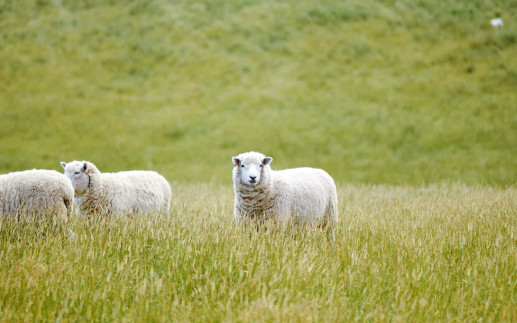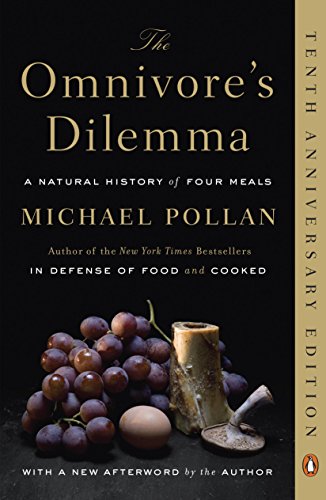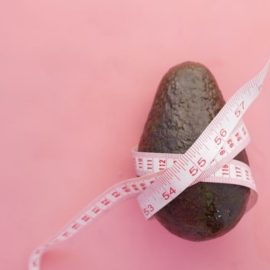

This article is an excerpt from the Shortform summary of "The Omnivore's Dilemma" by Michael Pollan. Shortform has the world's best summaries of books you should be reading.
Like this article? Sign up for a free trial here .
What is rotational grazing, or management intensive grazing? How is it used in responsible farming to produce healthy foods, responsibly? Learn what rotational grazing produces, and how to put it into practice.
The Output of Rotational Grazing
The foundation of the grass-fed farm’s food chain is grass of various types, in the way corn is the foundation of the industrial food chain starting on an Iowa farm. Animals and crops are rotated through the various pastures and benefit in a symbiotic way.
Pastures are grazed twice by beef cattle, followed by hens that eat bugs in the manure and spread the manure around (acting as a cleanup crew). Chickens also add their own fertilizer (nitrogen). Finally the pastures are cut for hay.
By the end of a season, the grass has produced 25,000 pounds of beef, 50,000 pounds of pork, 12,000 broilers, 800 turkeys, 500 rabbits, and 30,000 dozen eggs.
The pasture is not degraded in the process; it is improved, becoming lusher, more diverse, and more fertile, with more earthworms. The process shows that farming in accordance with nature is not a zero sum proposition in which humans benefit but nature is diminished.
Organic Rotational Grazing Principles
Animals eat grass and we eat the animals. The Old Testament describes the connection this way: “All flesh is grass.” But the industrial food chain overlooks or eliminates grass as a component.
The human connection with grass began with our ancestors. They encouraged the growth of grass to attract and fatten animals. They set fire to it periodically to prevent trees and shrubs from taking over, and to improve the soil. This helped the grass, which then helped the animals and the humans.
Annual grasses (corn, wheat, rice) developed, which humans could eat, and we eventually put all our energy into growing and harvesting them. Our appreciation for the polyculture of grass waned.
At Polyface Farm, grass of many types — bluegrass, timothy, fescue, clover — underlies the farm’s success. It’s supported by soil teeming with fungi, bacteria, insects, earthworms, and voles. (Healthy soil digests decomposed matter.)
The grass must be managed effectively, which requires local knowledge and action, as opposed to the one-size-fits-all approach of industrial farming using machines and chemicals for greatest efficiency.
Salatin practices “management intensive grazing,” which involves rotating animals through different pastures at various intervals. This requires using portable fencing and moving animals every day, as well as understanding how grass grows and responds to rotational grazing.
- Grass has a spurt of growth after animals have grazed the first time, or taken a first bite, and after the grass has rebuilt its reserves and root mass.
- Then growth slows down again and the grass gets ready to seed.
- The farmer has to avoid regrazing (allowing a second bite) before grass has a chance to recover from the first round.
Among the benefits of good rotational grazing management:
- Moving animals keeps them healthy by not allowing too much manure to build up underfoot, which harbors parasites.
- Grazing cattle get minerals they need from grass, and also nutrients to ward off disease, so they don’t need supplements and drugs.
- Rotational grazing cattle also start a process of replenishing the soil, and increasing the diversity of the plants in a pasture (rotated cattle don’t eliminate favorite grasses by overgrazing them; and no single species gets a chance to dominate).
- Pastures also remove carbon from the air.
Managing Animals in Rotational Grazing
In a similarly intricate way, Polyface Farm manages its animals. The various animals and the grass are interdependent, benefiting each other and the land while producing food.
In rotational grazing, chicken pens housing broilers are moved around the farm regularly — 10 feet per day — so they can eat grass and fertilize it with their manure; the birds avoid pathogens, and get nutrients from the varied grasses plus bugs, but are moved before their pecking and manure can destroy it.
There’s also an eggmobile (portable chicken coop) housing laying hens and their eggs, which is moved into areas that cattle have recently vacated. The chickens clean up the insects, larvae and parasites from the cow manure, breaking the cycle of infestation and disease.
The hens get protein from eating the grubs and insects, and lay tastier, higher quality eggs. The cows don’t have to be treated with chemicals to kill parasites.
———End of Preview———

Like what you just read? Read the rest of the world's best summary of Michael Pollan's "The Omnivore's Dilemma" at Shortform . Learn the book's critical concepts in 20 minutes or less .
Here's what you'll find in our full Omnivore's Dilemma summary :
- What does Omnivore's Dilemma mean?
- Why is industrial farming so bad for you and the environment?
- How did corn and its byproducts (like corn syrup) end up in tens of thousands of foods?
- How is Industrial Organic food like at Whole Foods not much better than massive industrial farming?
- What happens when you try to forage for your own food?






